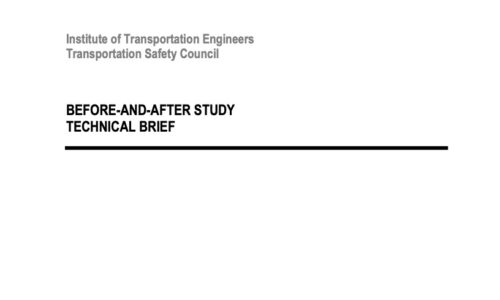
Home / About ITE Canada / Who We Are / Technical Liaison Committee (TLC) / Using Observational Before-after Studies To Evaluate Road Safety Project
Agencies are required to evaluate the safety effects of a specific improvement to compare its net benefit to other improvement options as well as to justify its implementation at subsequent locations. The typical method of evaluating the safety improvements of a treatment is comparing the crash prevalence associated with the transportation facility before and after the treatment implementation (a before-and-after study). A challenge inherent in these studies is that crashes are random and change from year to year, unlike laboratory experiments in which the analyst can control many extraneous conditions. Other parameters that affect the safety of a facility, such as traffic volume and weather conditions, change over time. Consequently, specific evaluation techniques are required to account for changes in order to estimate the true effects of safety improvements.
The main objective of this technical brief is to provide practitioners with a quick reference on the key considerations and components of a valid before-and-after observational study. This document also serves as a tool to increase the level of understanding of before-and-after study techniques so that they can be more effectively conducted in the future.

100.13 KB | 1387 downloads
